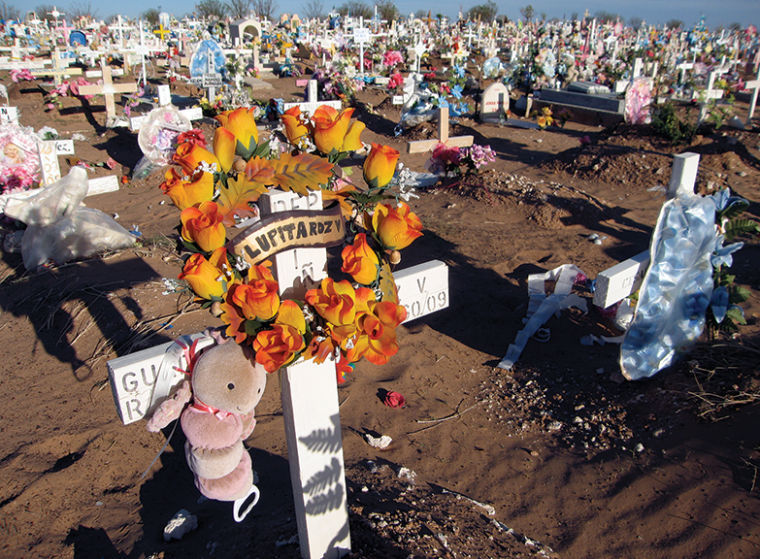Mexico finds its own dark knight in a huntress for justice
After decades of living in constant fear, the women of Ciudad Juarez, Chihuahua, Mexico have finally found their savior from the horrific femicide that has been occurring in their town. On Aug. 28 and 29, “Diana, The Hunter” killed two city bus drivers to avenge the deaths of these innocent women.
Ciudad Juarez gained international notoriety in the late 1990s and early 2000s for the murders of hundreds of women. According to an Amnesty International report, 370 young women and girls were killed in Ciudad Juarez between 1993 and 2005.
The victims, mainly young women, would disappear in the middle of the day, usually on their way back home. The families of the missing women, angry at the government’s lack of effort to solve these crimes and mourning the loss of their daughters, wives and mothers, created various organizations to create international awareness about the femicide occurring in Ciudad Juarez. Crosses were placed all over the city as a painful reminder of the sites where the women were found. Often, their bodies were discovered in desert areas around the arid city.
For years, the municipal and state authorities have tried to convince people that they resolved the problem, but this could not be farther from reality. Hundreds of disappearances still remained unsolved and some even have yet to be investigated. The authorities have not served any justice since the murders began two decades ago. Now “Diana, the Hunter” is taking matters into her own hands.
Her murders of the two city bus drivers were crimes of passion, justice or revenge. It is painfully clear what the murders represent to the Mexican people. They are a concrete symbol that justice will be served.
Just days after the murders, an anonymous user created a Facebook page in honor of “Diana, la cazadora de choferes” (Diana, the Hunter.) The comments left on the page are mainly ones of support and admiration.
To really understand what Diana represents for many oppressed people in Mexico, we must look at the reality of the country.
“Diana, the Hunter,” is a replica of what has been happening in many other Mexican states as ordinary people resort to taking justice in their own hand. This is happening because citizens are disappointed by the lack of response from the Mexican government. Diana represents the hundreds of case files that have been forgotten in boxes in the back of a room. She represents the Mexican people when their own government has failed to do so.
These acts push us to ask for justice in a country where people are used to these crimes against humanity. They remind us that each of those missing women has a story.







